
A guest Tactica by Michael Linke!
Hey everyone, Michael wrote in letting us know that he felt we needed another voice on the random initiative of AoS and we agreed! Read on and let us know what you think, -Reecius
It’s been called broken, random and unnecessary, and has proven to be a point of fierce contention among the budding Age of Sigmar gaming community, but the new initiative mechanic stands as perhaps the system’s least appreciated and most innovative aspect. Its implications go far beyond simply choosing who goes first on a given game turn and players who see it merely as some sort of coin toss, waiting for their chance to pull off a double turn, do so at great peril. This mechanic affects not only how we execute short term plans on a turn-to-turn basis, but how we should be building our lists, and adds an interesting and elegant minigame that fits well between the largely strategic exercise that is list building, and the tactical exercise that exists in the game’s 6 phases.

Let’s spell it out first for those living under rocks. Age of Sigmar departs from the You-Me-You-Me turn flow used by most GW systems, and indeed most games at large. In Age of Sigmar, at the top of each game turn–referred to in the rules as a Battle Round–players roll off on a d6. The player with the highest roll may choose to go first or second that game turn. What’s significant, brutally significant, is that this applies every game turn, not just the first. I might go first during the first game turn. You might go first during the second game turn. One of us might get to take two consecutive player turns! Has Games Workshop lost the plot? Do we stash this rule away in the same circular file as the one that requires me to wear a hood or win a staring contest to activate my Great Moonclan Warboss’s ability to reroll his misses?
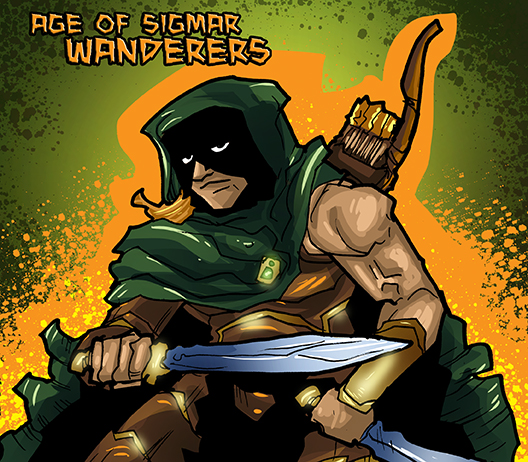
Before we discuss how this mechanic should change the way you approach Age of Sigmar, we will discuss what this writer believes is the Correct Way to use the mechanic. Simply put, you should always assume that “winning” the initiative roll means “going second”. If you’re coming over from 40k, which places a great emphasis on mobility in most mission types, you’ve already come to grips with the idea that being able to move on objectives at the end of a game can be just as powerful as getting to shoot first at the beginning of a game, however the situation in Age of Sigmar is a bit different.
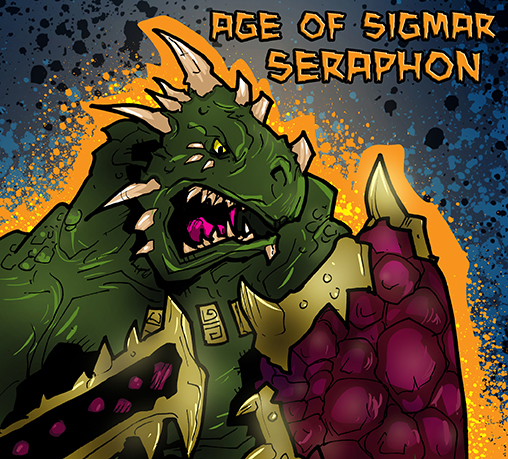
In a game between You and your Opponent, there are two ways that the turn order can play out on a given game turn:
1 – You, Opponent
2 – Opponent, You
Following from that, there are two ways the initiative roll can go on the following turn:
A – You win this turn’s initiative.
B – You lose this turn’s initiative.
This leads to four scenarios coming into the start of any game turn after the first:
1A – Your opponent was the last to go on the previous game turn, and you will decide who goes first on this turn.
1B – Your opponent was the last to go on the previous game turn, and your opponent will decide who goes first on this turn.
2A – You were the last to go on the previous game turn, and you will decide who goes first on this turn.
2B – You were the last to go on the previous game turn, but your opponent will decide who goes first this turn.
The worst of the four scenarios is 1B. Your opponent has the opportunity to look at the table and decide if their forces are in such a position that taking two consecutive turns will be decisive and you, poor soul, are at their mercy. At the other end of the spectrum, lies 2A, the most favourable of the four scenarios. You’ve just completed a player turn, and have the option to go again immediately, before your opponent has a chance to use any spells or command traits, maneuver any of his forces or make any ranged attacks. You also, oddly, have the option not to…
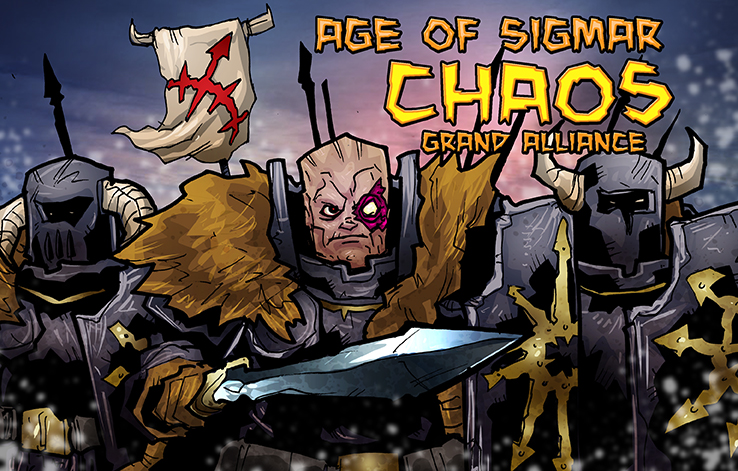
In a strange place between these extremes lies scenarios 1A and 2B. In the former, you will almost certainly decide to go first this turn to prevent your opponent from getting to act consecutively, but you reserve the option of allowing your opponent the opportunity to act twice. Silly, eh? In the latter scenario, your opponent is stuck with the same no brainer choice: preserve the alternating turn order, or hand you the easy win. Wow, these are all easy choices, right?
It might be a stretch to say this needs to be kept in mind, as it’s a pretty small concept once you understand it, but the key thing to note here is that the player who went second on the previous turn has the most to gain from winning an initiative roll, and the least to lose when their opponent wins initiative. Choosing to go second on a given game turn means that on the following turn, you might have the option to choose to act consecutively the following turn if you can win initiative or, at worst, your opponent is stuck with the tough choice of preserving the alternating sequence for one more game turn, or handing you consecutive turns. In general, we can say that when you go second on a given turn, you control the Tempo in the subsequent turns, as your opponent’s options are limited even if you should subsequently lose initiative. But beware that when you take full advantage of this Tempo by exercising the option to take consecutive turns, your opponent gets to go last in that game turn, setting them up to make the same decision going forward. In all cases, we can say that the player who acted last on a given turn controls the Tempo of the subsequent turn.

We’ve made conspicuous reference to the “no-brainer” nature of scenarios 1A and 2B above, but you should’ve guessed by now that we’ll be questioning the simplicity of those decisions. These under-appreciated scenarios allow a player who “lost” initiative the following turn a chance to ask themselves if allowing their opponent consecutive turns at this time is an acceptable circumstance. If your opponent who acted last on the previous game turn is coming off of some bad dice rolls that made their attacks less effective than they would have hoped, or a misplay has left some of their units out of position, it may very well be that allowing your opponent to take consecutive turns now, and gaining control of the Tempo next turn is a better choice than making short term gains at the top of this turn, while leaving the Tempo in your opponent’s hands. As favourable as the 2A scenario is, I would say that 1A and 2B are far and away the most interesting scenarios, and the ones that can really add depth to a game of Age of Sigmar.
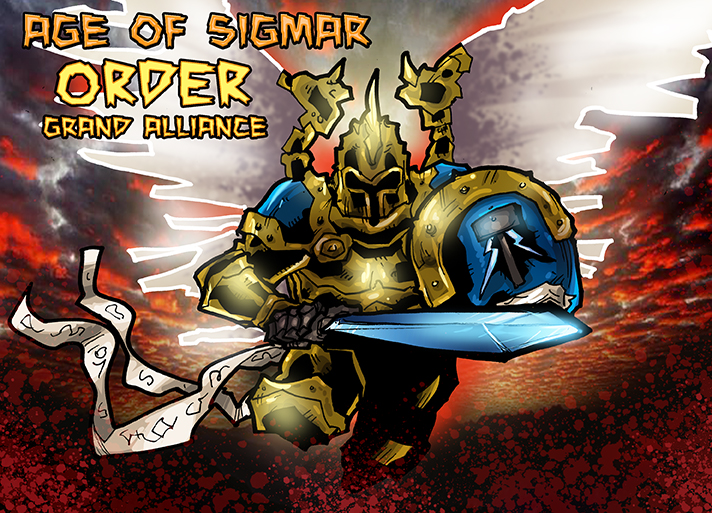
Having looked at how to approach the mechanic itself, we can discuss briefly about how the mechanic should inform play during a game turn. To put it very simply, a player who has Tempo benefits the most from aggressive play, and risks the least from such play. You can move further up field in the movement phase, and take riskier table positions if you want to bet you’ll be able to cash in your Tempo the following turn, and you don’t run the risk of your opponent smashing a fragile unit by executing their own consecutive turns. Likewise, a player who does not have Tempo benefits the most from defensive play, and loses the least from forgoing aggressive play. Staying just outside your opponent’s likely threat range minimizes the likelihood they will get to interact with your own units and softens the blow if you should win initiative the following turn and use it to force your opponent into acting consecutively, depriving them of Tempo subsequently.
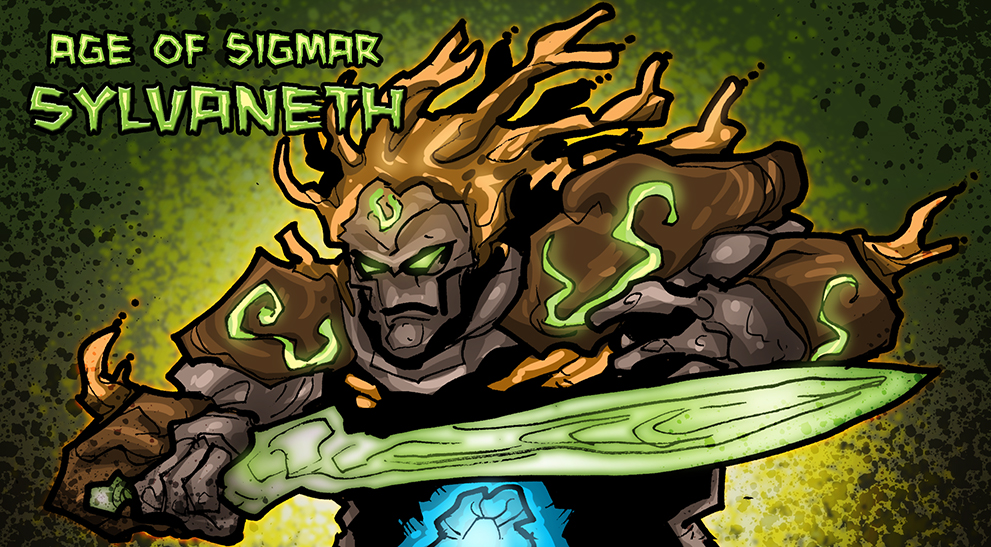
This brings us, I think, to the ultimate revelation about Age of Sigmar: The decision to play aggressively or defensively is not one made when choosing a faction, or even when writing a list. This decision needs to be made each turn! If you’re serious about playing competitive Age of Sigmar, and you’re writing lists that require you to play an aggressive game, you should feel as confident as a 40k player who writes a list that only works well when it Seizes the Initiative, or that can’t interact effectively with half of the game’s most lethal threats. As an effective player in Age of Sigmar, you owe it to yourself to write a list that is playable both Aggressively and Defensively, possibly even sacrificing efficiency in both play styles in favour of versatility.
The initiative mechanic as written by Games Workshop opens the door for a depth of game play we don’t have in many other games. And, best of all, this depth does not come at the price of a complex mechanic. Deep strategic consideration must be payed to perhaps the simplest gameplay mechanic of all: high roll wins. Beyond how Age of Sigmar’s initiative mechanic affects decisions during the game, I would wager that the types of lists that are best equipped to grapple with the implications of this mechanic make for a more interesting metagame than we might see with a simpler version of it.
And as always, Frontline Gaming sells Games Workshop product at up to 25% off of retail, every day!
Frontline Gaming will buy your used models for cash or store credit!

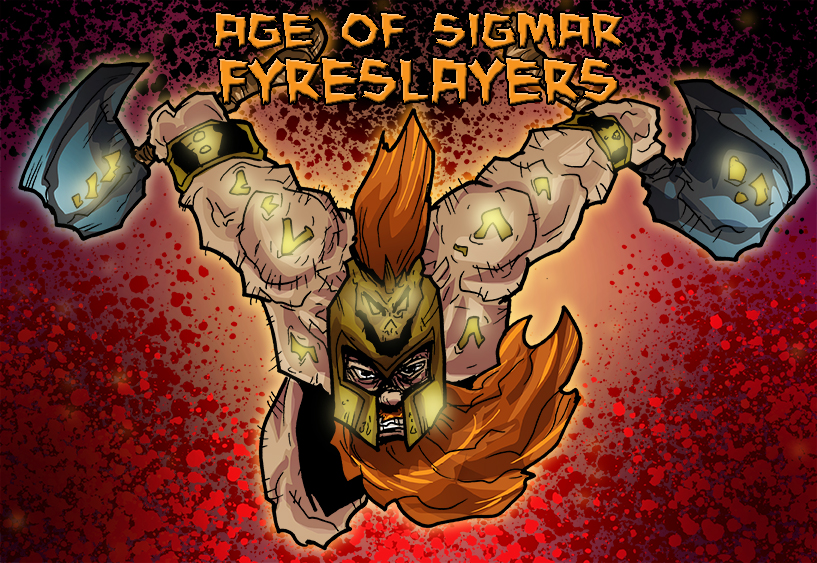

Fantastic article! I’m so glad you wrote this, it means I don’t have to, haha. There are lots of factors that go into picking the initiative order, and just because you can take a double doesn’t mean you should, since it would mean the next double would go to your opponent. It’s really an interesting mechanic in practice, once you get the hang of it.
One other point to make is that the player who is going second is guaranteed the double turn before their opponent. While it’s implicit in your article, I think it warrants saying it outright.
This means if you have the opportunity for the double, you can safely opt to not take it if you don’t need it, and don’t want to give up that level of control over the game. If your army is more balanced between shooting and combat, this is a fantastic strategy.
Good writeup, the metagame of random turn order is one that will really dictate games in the future imo. Learning to play with and around it will be the hallmark of moving from a good AoS player to a great one.
As I said in the TNR thread, there will probably be a trend of lists built for “racing deployment”. That is, going all in on Battalions and expensive Monsters so you can choose the first turn order. However, these can be extremely limiting and then I would wager the meta that pops up after will be all about countering those builds.
Yeah, Battalions are huge for this, but interestingly they also typically push your army build one direction or the other. The only armies I’ve seen that can really retain some degree of flexibility while taking a massive battalion are Sylvaneth and Bonesplittaz.
Sadly, Beastclaw Raiders don’t really fit well into the battalions they have in 2k, so will almost always be plagued with a lot of drops, making it unlikely that they’ll have the choice on turn 1.
A couple of points with regards to shooting in combat. It actually makes sense, if a soldier is being rushed by an enemy with an axe or sword and that soldier has a loaded range weapon why would he not shoot his enemy in the face?
Also you made an argument for shooting while in combat when talking about the fact that a large unit can’t get all of its models into combat. Fyreslayers were an example you used. All Fyreslayers have throwing axes. Why would soldiers not use those weapons when they can’t get in range to swing their axe.
Also, most shooting units are not as good once they are engaged in melee, and movement in AoS is usually fast enough that they become engaged reasonably fast. My gaming group has been playing with the AoS rule set since it released and the shooting in combat has not caused any balance issues for us.
As to shooting at a unit the shooters are not engaged with, I would have no problem with that being FAQ’d.
Just my 2 cents worth.
very nice “brain storm”!
imao, from my experience, build resilient lists are very efficient.
i use gnarlroot style with lot of kurnoth hunters AND healers and it works on lot of situations.
I love the new initiative mechanic. A quick piece of advice I give players about it, if you go first in a turn, play defensively. If you go second in a turn, play aggressively.
I thought this was a well written article. So I am pleased they are preserving it for the LVO. However, what will likely happen is after the LVO, they will put up a vote, and it will likely go to traditional turn order because not enough people recognize the hidden strategy in it, and will want to stick with what they know.
Where are people getting this idea from?!?!?! Lol, for crying out loud, we have not said in any way that we will alter the initiative mechanic or are even considering it!
Haha, for crying out loud, we are not thinking about changing it!
Good grief, lol. But, my rant aside, glad you liked the article I found it very informative, too.
ninth realm #16. You guys talked about exit polls to change those rules. That to me mean it’s up to consideration, and the consideration in the result of such a vote.
Additionaly, it’s not really the message you think you sent that matters when communicating. It’s the message the people your talking to receieve. To me the concensus reach by your podcast is that it’s definitly up for consideration, and something that might go up for a vote, and that you three are going to be voting for banning the double turn.
This is a great article, but in our experience the subtlety of this strategy is lost on us. When one player gets the double turn they tend to win on that turn, so we’re all still scratching our heads a bit.
I would love to see a follow up article showing on the table tactics for avoiding that crushing blow.
I think then it’s up to the players to analyze why the double turn was so devastating.
When you go first in a battle round, you have to think to yourself: what happens if my opponent gets a double turn? And then you have to play appropriately. Whether that means not doing a power play to keep yourself safe or making a risky move to kill a unit before it gets a double turn of shooting is dependent on the situation.
I think the downfall of many newer players is just to play out that turn as normal and then be caught completely by surprise when they get double’d on.
—
For example, if you’re on the top of turn and you have a melee army against a shooting one, the decision comes up – do I move this unit to get into charge position against a shooter or do I move it to get onto an objective and into cover? You pre-measure and see that the charge distance is 10″ – a long shot.
Now, if you fail the charge, you can probably survive one round of shooting. So then you have to wonder if you can take two rounds, because that’s what will happen if they win the rolloff. But, if you make the charge and kill the unit (or at least guarantee yourself the attacks on their turn in combat), then it’s a huge play. So, risk/reward.
Or, you make the safe play, and move into cover/onto the objective, getting no damage but getting points and keeping safer.
—
The biggest concern on my part is that it’s going to limit army builds to those that can either take advantage of or are more resilient to double turns, while other lists will be left in the dust.
And that’s sort of ok, since list building should be part of the game. I just don’t want to get into a situation where only like 5 builds are playable, like certain systems I could name.
Yeah, I’d love to see all of this in action. For us, it has been pretty blunt. One player with a shooty army (which most folks around here play) goes twice and it’s curtains for the other player. The only way I have been able to avoid it is with my Wanderers hiding out of LoS and then using magic and trickery to move insanely fast and get into melee. That still doesn’t always work because the shooty units just shoot into combat and hose you.
Even in my fairly limited experience with AoS, I’ve seen this play out a couple of times. It’s all too easy to end up overstretched after a double Turn, or take one out of habit when you’re too tied up to really be able to get much advantage from it. It definitely hasn’t been an overwhelmingly decisive factor in our Games.
I get what your pointing to in the article. But most games Ive seen and played competitively dont need to wait for the right double turn becuase the competitive meta is heavily in to shooting and then you grab the first chance for double and end it with two turns of shooting. Not many armies survive a double turn against an AOS shooting army. In fact I don’t think anybody does realy.
The problem with saying that nobody survives against a double turn against a shooting army is that the tournament results don’t support your claim. While AOS may seem fresh in the US, especially among 40k players, they’ve been playing it competitively in the UK for quite some time, and have even had a number of 60+ player events.
From what I recall, the first major one after the General’s Handbook was won by a shooty Order army, the second was won by a Death army with no shooting to speak of, another won by a Stormcast army, and yet another by a Skryre army with a combat emphasis. The armies in the top 10 for all of the big events have also been similarly diverse.
If you really want to piss off a shooty army on the double, start stacking up -1 to hit on their units, it will make your debuffs last twice as long (as they often last until YOUR next hero phase). On the same note, buffs to your own units will similarly last twice as long, making Mystic Shield even better. Stacking buffs/debuffs in AoS is very important.
What you could try is to debuff the shooting army, keep back out of real killing range and then use manipulation of the roll to try force them into the double-turn from a poor position to take advantage.
They are now vulnerable because only you can now get the double-turn and can therefore afford to play aggressively.
As mentioned elsewhere Fateweaver can change that roll once per game. I think Seraphon have a couple of sources of re-rolls that could manipulate it. There may well be others that I am not aware of.
This is such a new mechanic that I think we will be working out the tactics and counter-tactics around it for quite some time.
Great article Michael! (Your buddy Ata here from the nubrand club) You make some very significant and insightful points. I, like others on this thread, really appreciate the alternating initiative. I believe it truly is one of the smartest innovations in the AoS rule set. Perhaps some gamers’ resistance to it stems from the fact that they are so used to 40k’s ‘I go, you go,’ which is relatively straightforward to understand, but really limits the scope of tactical possibilities. The AoS approach is much more subtle, and I would argue more realistic in depicting the shifting fortunes of battle. New-age wargames like AoS, Bolt Action, X-wing, etc… are attracting more and more restrained and tactically savvy players who aren’t so interested in first turn alpha strikes or last turn objective grabs. The success of these rule sets are making their influence felt, and I would argue that some form of alternating initiative is the way forward for 40k as well in future editions, but to focus on the AoS discussion at hand…
As stated by others, the alternating initiative is such an influential factor in the flow of AoS, that one really must take it into account in the list-building stage. Lots of layered screening troops to shield against potential double turn beta-strikes, soak up mortal wounds, and provide board control (keep the layers 2-3″ from each other, so they can counter attack on the turn they get assaulted). A good mix of monsters to hit back with. Fast units that can take advantage of a double turn to take out enemy missiles or artillery. Paying the points for a Battalion not only for its rules benefits, but also to deploy all at once, thereby allowing you to choose who has first turn (usually take the second!).
An example: – I play Tzeentch Daemons for the most part – I can game this to great effect, though I haven’t tried this specific build yet in the 10 or so games I’ve had so far: Taking a Daemon Cohort of Tzeentch along with Fateweaver, and the rest of my points in a summoning pool, I can make the play for first turn choice after beating my opponent in the deployment race, and then choose to go second, while deploying far out of range of the opponents threats. Depending on what my opponents first move is, I can then use Fateweaver’s ability to change the result of the 2nd or subsequent turns’ initiative roll-off to my benefit, guaranteeing a double turn if I want it, or not. This allows me to go on the offensive with a daemon summoning bomb (like a Lord of Change dropping an Infernal Gateway on some poor hero up the board), or continue to play defensively. This is only one example of how to manipulate the turn order, and I’m sure there are other ways. The alternating initiative during the close combat phase of each turn is also very interesting and tactical as well, and deserves some in-depth discussion. Like it or not, initiative is a huge part of the game, and not always the catalyst for victory. I’ve had many matches where players get the chances for decisive double turns, but the opponent has been able to counter and perhaps even win through savvy understanding of this mechanic and placing his or her units accordingly.
Wait, Fateweaver can manipulate the roll for initiative die? If so that is bananas powerful. I thought that roll couldn’t be manipulated?
If so–no offense friend–that’s hardly tactical brilliance to manipulate the most important die roll to determining who controls the flow of the battle, hahaha. Again, I am in no way putting you down–I hope it doesn’t come across that way–but that’s not a viable strategy for most armies: ensure first turn then vastly sway the odds of winning initiative. That’s hardly operating within the mechanic but bending to skew the odds in your favor. That’s circumventing the actual rule.
Thanks for the thoughtful post though, lots of good stuff in there.
Fateweaver can change the initiative roll, it is a trick you need to be wary of when facing that army. That army build really wants to you over-commit to attack and then punish you on the double turn. By contrast what you probably want to do is use the advantage of going first to whittle them down and play a cagey game; over several turns you are aiming to attrition them down to the point where they need to use their one big gimmick just to stay in the game.
AoS is a game that can catch you out badly if you do not understand what the opposing force can do. This is certainly one of those gotchas.
Yeah, fair enough. The initiative roll should not be a roll that can be modified, IMO. That is too much influence over the course of the game in my mind.
EDIT: Nm, just saw that it was once per game. Much more reasonable.
Haha, I never claimed tactical brilliance, and no offense taken! Nor am I advocating for that combo that I’m sure some people might find rather aggressive (like I said I haven’t used it). But it is indeed part of the game and perfectly legal and viable strategy for at least 1/4 of the armies out there that can take Chaos, as far as I can see:
“Oracle of Eternity: Once per game, you can change the result of a single dice roll to the result of your choosing.” Yup.
It’s been used in tournaments, and hasn’t necessarily won. I heard about it from a Canhammer podcast a little while back, so credit goes to that gentleman, sorry I don’t recall his name. Clearly there are lots of unexplored combos that we as a community are just coming to terms with, and I’m sure many have to do with alternating initiative. Let’s bring them all out to the light of day and let the cards fall where they may.
Yeah, it seems brutal on paper, and is annoying in-game, but when you think of it, you’re simply changing the results of a single coin toss of 6 during a game (not to mention your opponent could have still rolled a 6, which would mean wasting the ability for a re-roll). You’re not creating a situation that couldn’t have otherwise happened, nor is it something you can do multiple times. Additionally, if your opponent finished deployment first, you’re still not going to be able to get a double turn before your opponent has one, so you’re only going to delay theirs.
And as a cheeky aside for all you history buffs, the word ‘Kairos’ is an ancient Greek concept for ‘the opportune moment,’ whereas Kronos is more about the concept of linear time. Nice easter egg GW ; )
Yeah, wow. That seems OTT to me, that roll should be sacrosanct or every faction should have a way to influence it. Giving that advantage to a single faction is silly.
Well, oh well. Haha, were I in charge that certainly would not be a thing.
Thanks for bringing it to our attention, though!
EDIT: Oh wait, once per game! Oh, I thought it was every time. NM, that is not so crazy.
For what it’s worth, Episode 11 of the Rolling Bad Podcast (another I highly recommend) talks quite a bit about the Initiative mechanics (and mention the previous 9th Realm podcast).
Will check it out!
Yep, I’m definitely making a Fateweaver now…to go with 4 Hellcannons.